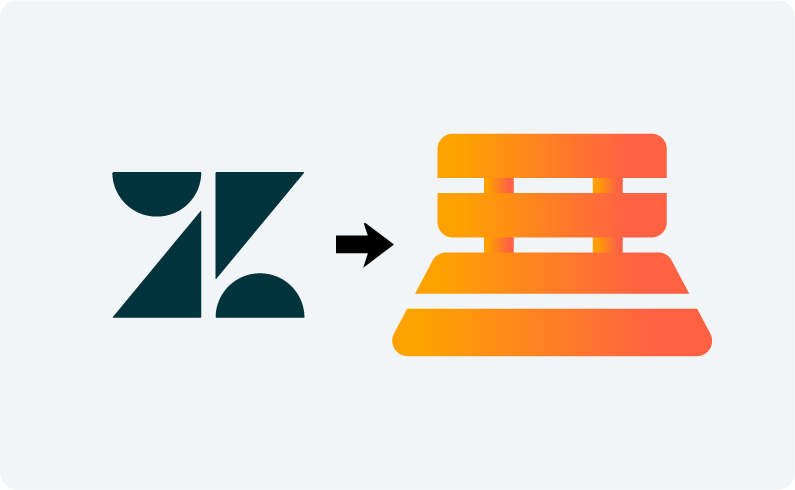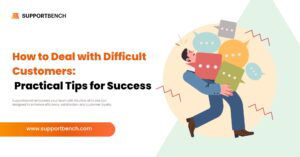Customer support has evolved over the years. Gone are the days of mere ticketing and query resolution. Today’s businesses are looking for robust, dynamic, and comprehensive customer support software that aligns with their growth and offers greater customization. While platforms like Zendesk have been reliable for many years, the current demands of a dynamic business environment often require more advanced, comprehensive solutions like Supportbench. But not everyone understands the importance of making the switch.

The Consequences of Staying Put
Sticking with the status quo can seem appealing, especially if you’ve been using Zendesk for years. However, resistance to change and adaptation can and will have dire consequences:
Lack of Personalized Support: As businesses grow, so do their customer base and their unique needs. A generic support approach can lead to unaddressed issues and dissatisfied customers. Without leveraging AI for personalized support, businesses risk not only losing customers but also valuable insights into their needs and preferences.
Reduced Operational Efficiency: In a fast-paced business world, static SLAs can lead to delayed responses and unmet customer expectations. Without dynamic SLAs, a company may struggle with prioritization, leading to missed opportunities and even churn.
Inadequate Customer Insights: A piecemeal view of the customer can result in lost cross-sell or upsell opportunities. Without a 360-degree customer overview, agents lack the information to anticipate needs or provide informed recommendations, leading to lost revenue.
Communication Silos: An inability to centralize communication can hinder collaboration and slow down response times, impacting both team productivity and customer satisfaction.
Data Vulnerabilities: Without role-based access, sensitive customer data can fall into the wrong hands, risking not only a potential data breach but also a damaged reputation.
Integration Hurdles: Failure to integrate with other essential business platforms can cause inconsistencies in customer data, leading to ill-informed decision-making and reduced efficiency.
Advancing to a modern Support System
By not transitioning to a solution like Supportbench, companies risk being overshadowed by competitors who offer a more integrated and efficient customer experience. Supportbench’s advanced features ensure that businesses don’t fall into these pitfalls. It’s not just about changing platforms; it’s about evolving with the business landscape to offer unparalleled customer service.
“A modern enterprise requires tools that are scalable, adaptable, and capable of delivering customer-centric solutions,” notes Tom Martin, a leading industry analyst.
Let’s delve into 6 actionable trends, you can harness with a Modern Support Platform.
6 Actionable Trends for Support Leaders:
- Leveraging AI for Personalized Support:
Artificial Intelligence is not just a buzzword; it’s revolutionizing the way businesses approach customer support. AI can analyze data to detect patterns and predict what customers will need next, ensuring they receive relevant and timely support. Using sentiment analysis and emotional scoring, like those in Supportbench, businesses can determine if a customer is frustrated even before the ticket escalates. This pre-emptive approach can drastically reduce ticket volume and enhance the overall customer experience. In my experience, you can begin by identifying repetitive queries and integrating AI solutions to address them automatically. For instance, using chatbots to answer frequently asked questions can free up human agents to handle more complex tasks.
- Embracing Dynamic SLAs:
Standard Service Level Agreements (SLAs) often lack the flexibility needed in today’s fast-paced business environment. Dynamic SLAs offer the agility enterprises need, ensuring that urgent matters get immediate attention. So, if a long-term client’s subscription is nearing renewal, tighter SLAs can be implemented to ensure they receive prompt service, enhancing their overall experience and increasing the likelihood of renewal. You need to reevaluate your current SLAs. Identify key customer segments or specific scenarios that require special attention, then adjust SLA parameters accordingly.
- Comprehensive Customer Overviews:
360-degree customer overviews allow businesses to understand their customers better. This holistic view can help in predicting future needs, understanding past interactions, and more. A customer who frequently contacts support regarding one specific product might be interested in an upgrade or an accessory. This insight can be beneficial for both the support and sales teams. It’s vital to integrate all customer data sources. Train your team to interpret this data and leverage the insights derived from it during their interactions.
- Unified Communication Platforms:
With remote work becoming increasingly popular, the need for unified communication platforms is paramount. Enterprises need a singular place for emails, chats, and other communications. Supportbench’s email editor, reminiscent of Outlook, is a great example of a system that integrates different communication channels seamlessly. You can opt for platforms that offer multi-channel communication. Train your team on best practices for each channel, ensuring consistency in communication.
- Enhanced Security with Role-based Access:
Not every piece of customer data should be accessible to every team member. Role-based access ensures that sensitive information is protected and only available to those who need it. An agent may only need access to a customer’s recent tickets, while a manager might require an overview of the customer’s entire history. So, regularly review who has access to what. Implement role-based security measures and educate your team on the importance of data security.
- Integrating External Platforms and Tools:
Integration capabilities, like Salesforce synchronization in Supportbench, ensure that your customer support system isn’t siloed but is instead a part of your larger enterprise ecosystem. If a customer mentions a recent purchase during a support call, the agent can quickly pull up the details from the integrated CRM, resulting in a smoother interaction. It’s important to regularly evaluate the tools and platforms your business uses. Ensure that your customer support system can integrate seamlessly with these tools, enhancing overall efficiency.
In Summary:
It’s essential to note how modern solutions, like Supportbench, have inherently embraced these trends, ensuring that enterprises don’t just survive but thrive in the modern landscape. Migrating from systems like Zendesk to more comprehensive platforms is not about change for the sake of change. It’s about ensuring that as the world of customer support evolves, businesses are not just keeping pace but are ahead of the curve. Most certainly, this isn’t merely a choice between two platforms. It’s a strategic move to ensure businesses stay competitive and efficient and continue to meet and exceed their customers’ evolving expectations.












